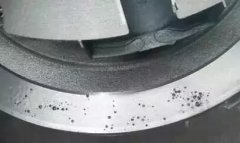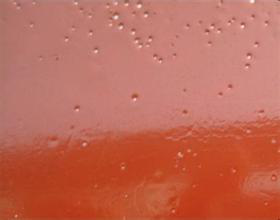Six castings common defects’ causes and prevent method, not collecting will be your loss! ((Part 1)
Casting production process, influencing factors and casting defect or failure is inevitable, that tend to bring huge loss to the enterprise. Today, I will introduce cast six kinds of common defects and solution, hoping it is helpful for foundry industry.
1 Porosity (bubbles, choke hole, Pocket)
1) Features: Porosity is present within the casting surface or holes, are round, oval or irregularly-shaped, sometimes multiple pores form a air mass beneath the skin is generally pear-shaped. Choke hole irregular shape and rough surface. Pocket is a surface is concave in a surface smoother. Bright pore is visual by inspection, the pinhole can be found after mechanical processing.
2) Causes:
l Mold preheating temperature too low, liquid metal passes through the pouring system cooling too fast.
l Poor design of mold exhaust, gases cannot be discharged unobstructed.
l Paint is not good, poor exhaust itself, including his own volatilization or decomposition gases.
l Mold cavity surface holes&pits, after liquid metal is poured into holes, rapid expansion of pit gas compressed liquid metal to form a choke hole.
l Mold cavity surface in corrosion and have not been cleaned.
l Raw materials (cores) stored improperly, without preheating before use.
l Poor reducing agent, or improper dosage or improper operation.
3) How to prevent:
l mold to fully preheat, coating (graphite) particle size should not be too fine and have better breathability.
l Use tilt casting method casting.
l Raw materials should be stored in dry and ventilating place, when used to preheat.
l Select the deoxidation effect good reducing agent (magnesium).
l Pouring temperature should not be too high.
2 Shrinkage
1) Features: The shrinkage is a surface rough hole that exists on the surface or inside the casting. Slightly shrinkage is a lot of scattered small shrinkage of coarse grain,often occurred in the casting near the runner, riser roots, thick parts, the thickness of the wall transfer and a large plane.
2)Causes:
l Mold working temperature did not meet the directional solidification requirements.
l Improper coating selection, coating thickness is not controlled in different parts.
l The casting position in the mold design is not appropriate.
l Pouring riser design failed to achieve full complement the role.
l Pouring temperature is too low or too high.
3)How to prevent:
l To increase the molds’ temperature.
l To adjust the coating thickness and coating sprayed uniformly.When the paint falls off and need to make up,should not form local paint accumulation.
l To local mould heating or local insulation using thermal insulation materials.
l Set hot spot copper block and chill the local.
l To Design radiator in mold, or by accelerated cooling rate in local areas such as water, or spray water outside mold.
l With detachable unloading chilling piece, placed alternately within the cavity, in order to avoid when continuous production , itself cooling not sufficient.
l To design pressure device on the riser of mold.
l To design gating system accurately, selecting the proper pouring temperature.
3 Slag holes (flux slag and metal oxide slag)
1)Features: The slag hole is bright or dark holes in the casting, all or part of the hole was filled by slag. Irregular shape,small point of flux slag is not easy to find, after the removal of slag, then showing a smooth hole. General distributed in the lower part of the casting position, near the runner or casting corner, oxide slag is mostly distributed in a mesh gate near the surface,sometimes in flakes or irregular cloud with a wrinkled or sheet sandwich,or flocculent castings, it often breaks from the sandwich with oxide. It is one of the root causes for casting cracks.
2)Cause: The slag hole is mainly due to alloy smelting and casting process (including incorrect gating system design), mold itself does not cause slag hole, and using metal mold is one of the most effective ways to avoid slag.
3) How to prevent:
l To design gating system accurately,or use cast fiber filter.
l To use inclined pouring method.
l To select the agent of fusion and strictly control quality .
The other three casting defects will be continued next week.Thanks.
Company: Dinsen Impex Corp
Website: www.dinsenmetal.com
Post time: Jul-10-2017





